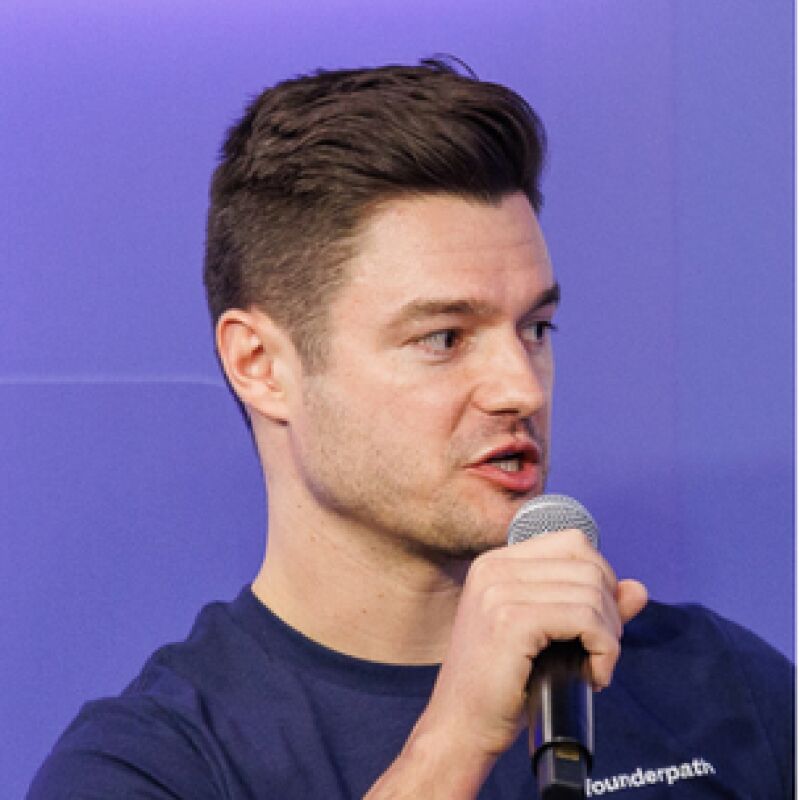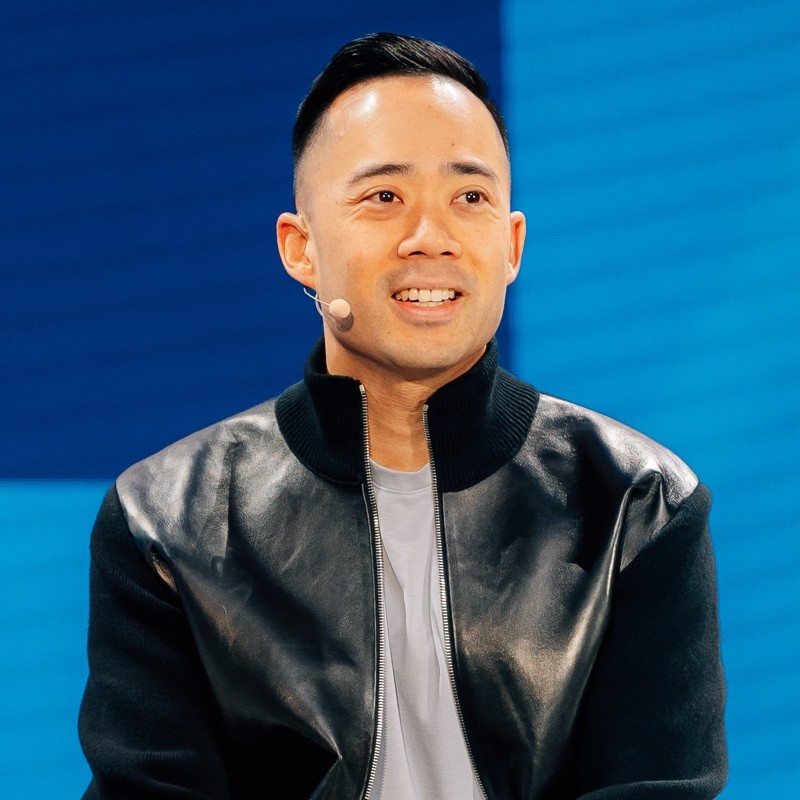You’ve probably heard that Google’s AI search features are tanking organic traffic.
In April, we reported that click-through rates dropped by 35% across 300,000 keywords. Now, a Pew Research study has revealed that just 1% of articles cited in AI Overviews actually get clicked.
Smart brands aren’t waiting around for Google to reverse course. They’re diversifying fast, and the strategies range from subtle pivots to temporary channel abandonment.
Here are 5 ways brands are diversifying to reclaim lost traffic and revenue.
Not every zero-click search story starts with the great decoupling of 2025.
Some were feeling the impact of Google’s self-serving SERP months before AI Overviews really took hold.
Seer Interactive
Back in October 2024, Wil Reynolds, VP of Innovation at Seer Interactive, shared that their organic search traffic was down 41%.
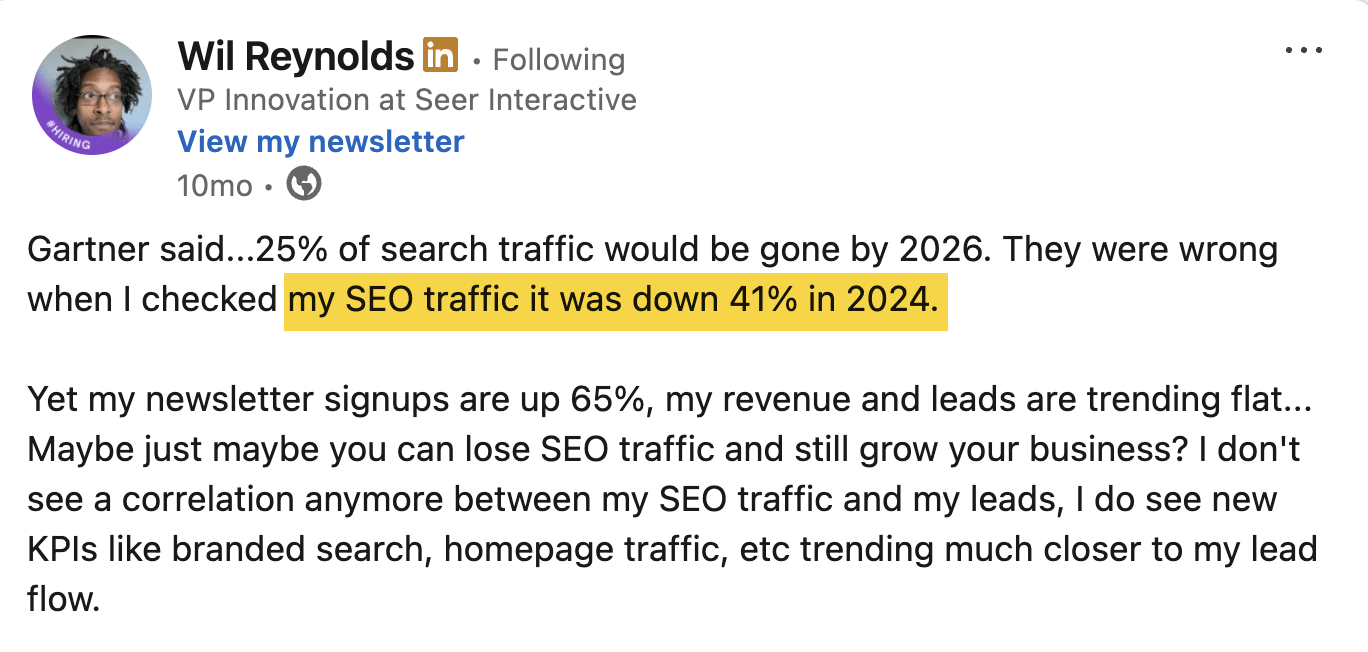
The other week I came across another really interesting post by Alisa Scharf, also a VP at Seer.
In it, she said that Seer won’t be advising all clients to invest in SEO or AI—and will, in some cases, be actively telling them to pull back and reinvest in other strategies.
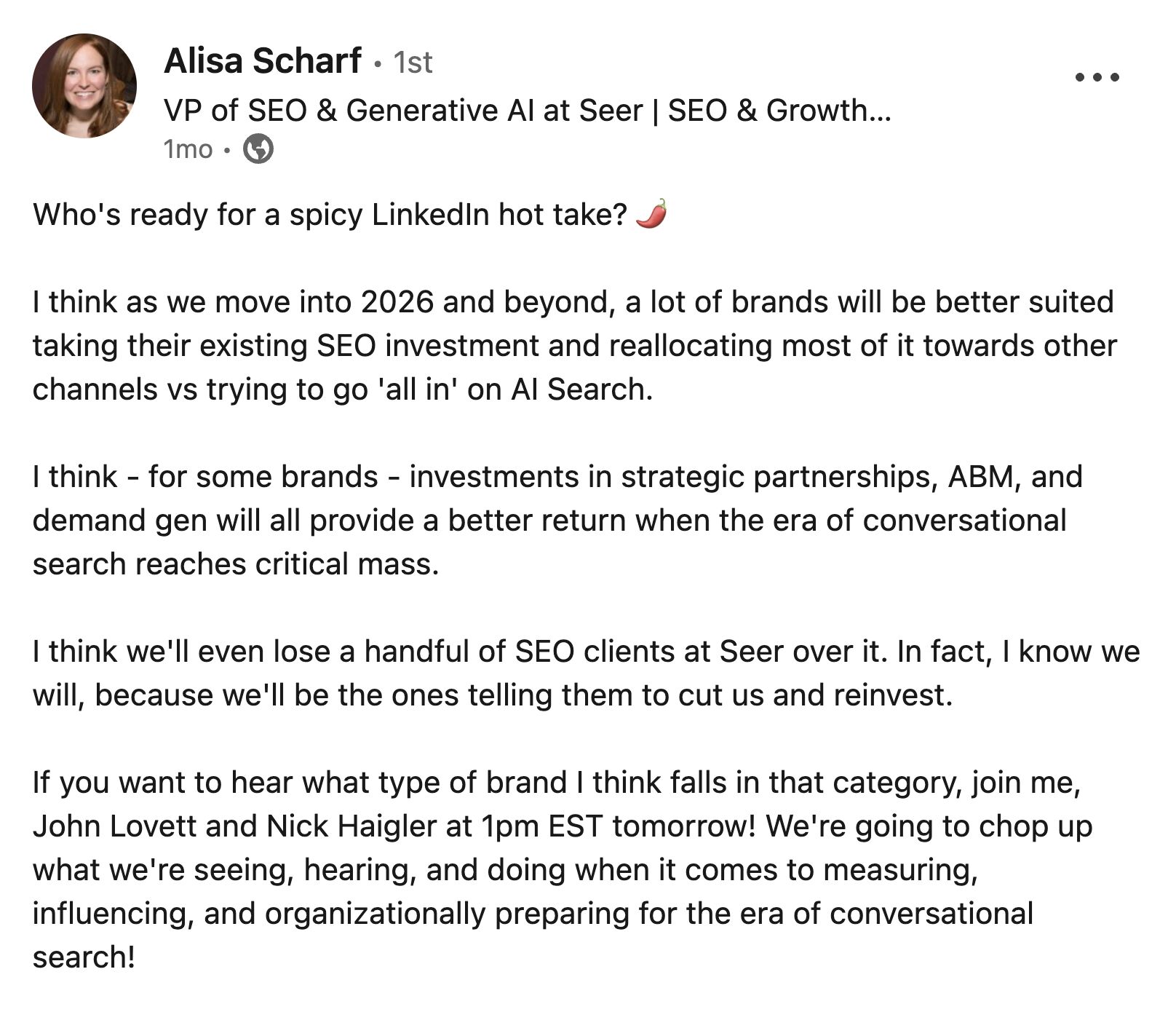
For context, Seer Interactive is an SEO, PPC, and growth agency.
When those with skin in the game advise alternative channels, and report diminishing returns, you know it’s time to diversify.
This got me curious as to how much Seer is currently investing in SEO. I DMed Alisa to find out. She told me that the Seer team is thinking far less about traffic and far more about thought leadership.
Our greatest lead source has been referrals, which I think is the #1 thing a consultancy can try to accumulate. Do great work for your clients and they will take you with them as they move to different organizations. I will say in 2025, while we don’t generate a ton of search traffic from it, we are getting discovered more from our thought leadership content via search. Our posts that cover how we’re approaching AI Search - how to influence, measure, etc. seem to be exposing us to the types of brands we want to find us.
But Seer’s real focus is organic social. As Scharf puts it:
Traffic via organic social (largely LinkedIn) is probably the source we’re most focused on optimizing for. The traffic volume is smaller but it’s extremely high quality. I also think we’ll continue to be in a position to think about different layers of influence. You can’t focus on just one source or one channel. There is a lot of chaos in the SEO industry right now given all of the change. Our ICP is juggling a lot of priorities, she’s trying to educate herself on the changes in search while continuing to hit her OKRs while balancing budget cuts and headcount reduction. Our best bet is to be able to build trust with her, or rely on the trust we’ve previously built with our content, our presence in events, and our reputation.
Seer’s content strategy is secondary to building that trust. Their number one goal is to get as much valuable, helpful content in front of their ICP as possible so that if/when she’s ready to consider one of their paid services, they are highly top of mind.
Thought leadership won’t always drive volume, but it can drive the right people to your door—and that’s a trade worth making.
Lars Lofgren
Lars Lofgren is Co-Founder & Chief Growth Officer of Stone Press. In the programs he runs, he’s deprioritizing SEO—and has seen plenty of brands doing the same.
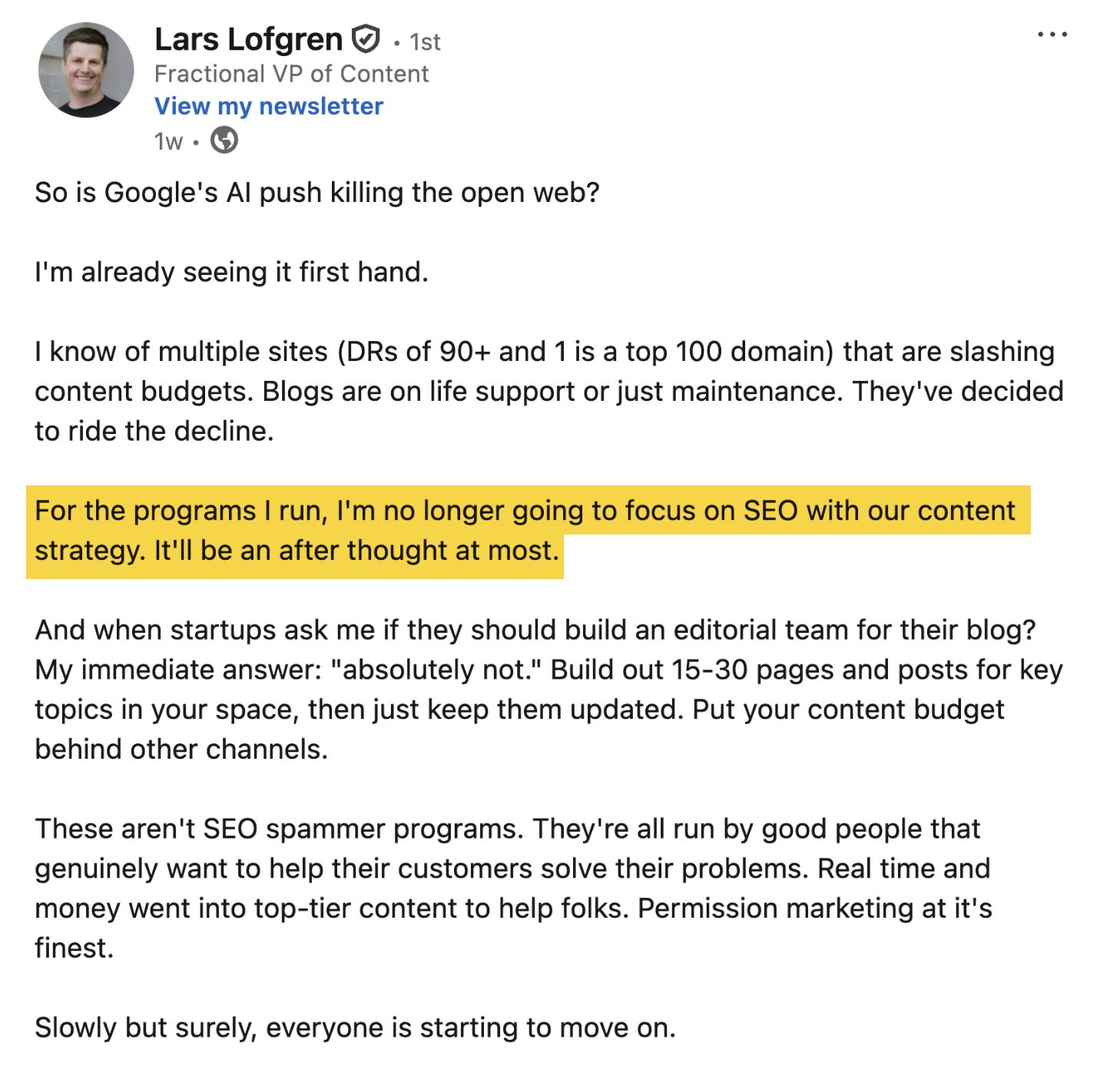
Instead of pouring budget into bloated editorial teams or chasing diminishing blog traffic, Lofgren advises startups to keep content inventory lean.
A handful of core pages—enough to cover the essentials—and that’s it. No sprawling content calendars. No weekly publishing cadence. Just what’s needed, kept in shape.
Like Seer, he’s also prioritizing thought leadership…
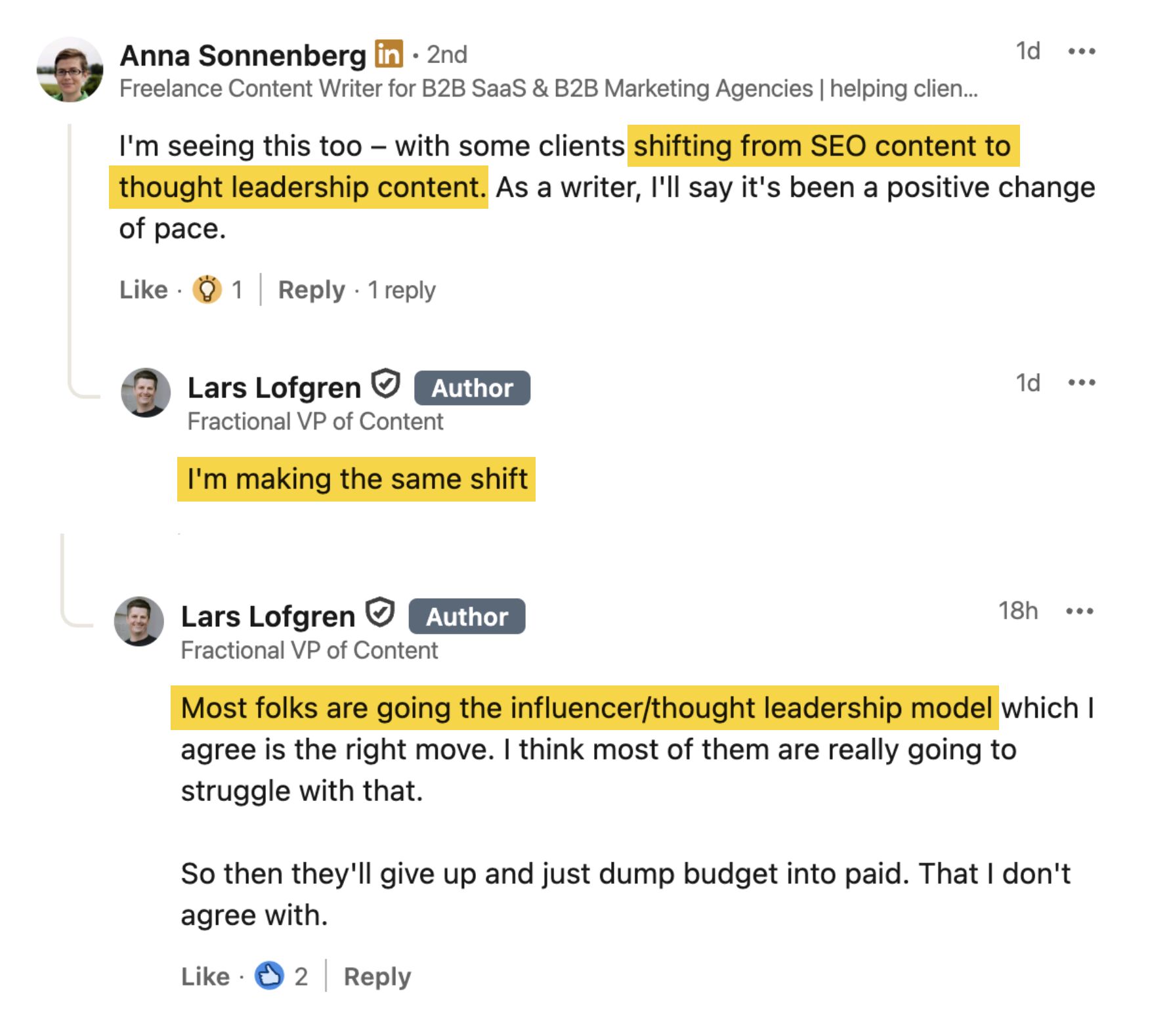
As he rightly points out, thought leadership doesn’t come easy. SEO has a playbook—optimize the page, build the links, track the rankings.
I’m oversimplifying things here but, generally speaking, these fundamentals will take you a long way.
With thought leadership, there’s no such formula. You can’t expect that if you do “x + y” you’ll end up with “z”.
That means, with diversification, we need to start getting comfortable with the “traditional” or “fuzzy” kind of marketing that we abandoned roughly around the same time we started thinking Google-first.
In direct response to Google’s click ransom, some SEOs are locking down their content.
I’m not talking full-on blocks. There’s a more nuanced approach gaining traction: limited access for users and crawlers.
Content gating faded out, but it’s making a resurgence now that people want to wrest back control over their content from AI.
Here are two brands that are taking two contrasting tacks.
GetLatka
We’ve all seen charts like this in our Google Search Console—clicks down, impressions up.
It’s a classic case of the great decoupling.
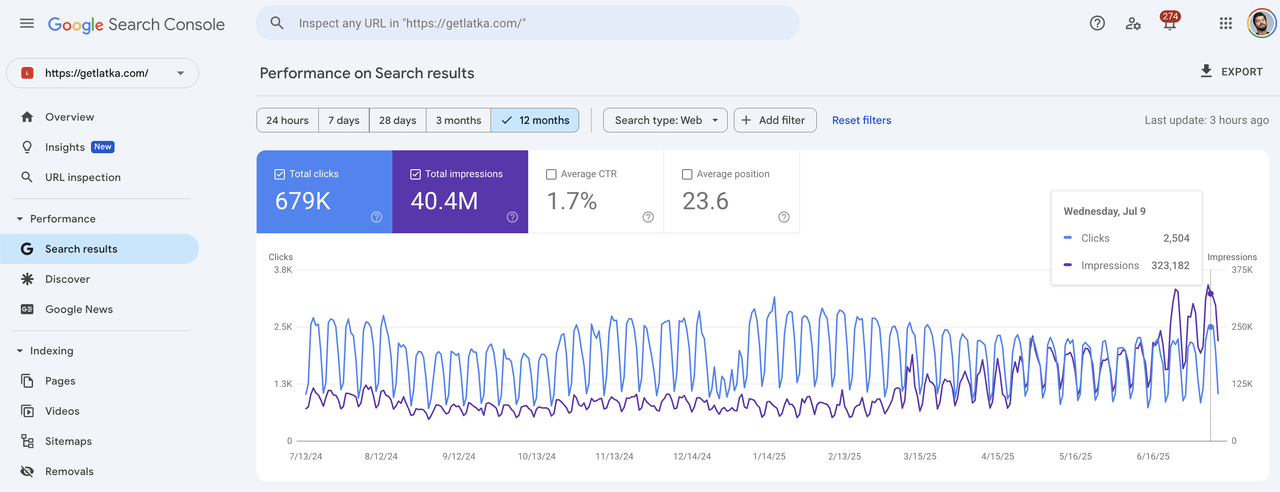
This one comes from Nathan Latka, courtesy of a great LinkedIn post by Ivan Palii.
Despite a huge jump in impressions, Latka’s site saw a significant drop in CTR following the rollout of AI Overviews—a drop that prompted the defensive decision to gate his content and partially block AI bots.
This was a really tough decision. Big internal debate. Will watch the data and see what happens.
His robots.txt file allows crawlers from Google, Bing, and Ahrefs, but blocks everything else.
And by “everything else,” I really mean everything else. Any user-agent not explicitly whitelisted—including those powering AI search, AI assistants, and scrapers—is blocked.

That includes:
| Category | Examples |
|---|---|
| Google AI | Google-Extended, GoogleAgent-Mariner, GoogleAgent-Shopping |
| OpenAI / ChatGPT | GPTBot, ChatGPT-User, ChatGPT-Feedback |
| Other LLMs | Anthropic-Bot, ClaudeBot, CCBot, Bytespider |
Latka has implemented partial indexation through subscription popups which enforce logged-in access requirements—meaning he only provides previews, and hides the full content behind a paid account. It’s similar to the paywall model in the publishing world.
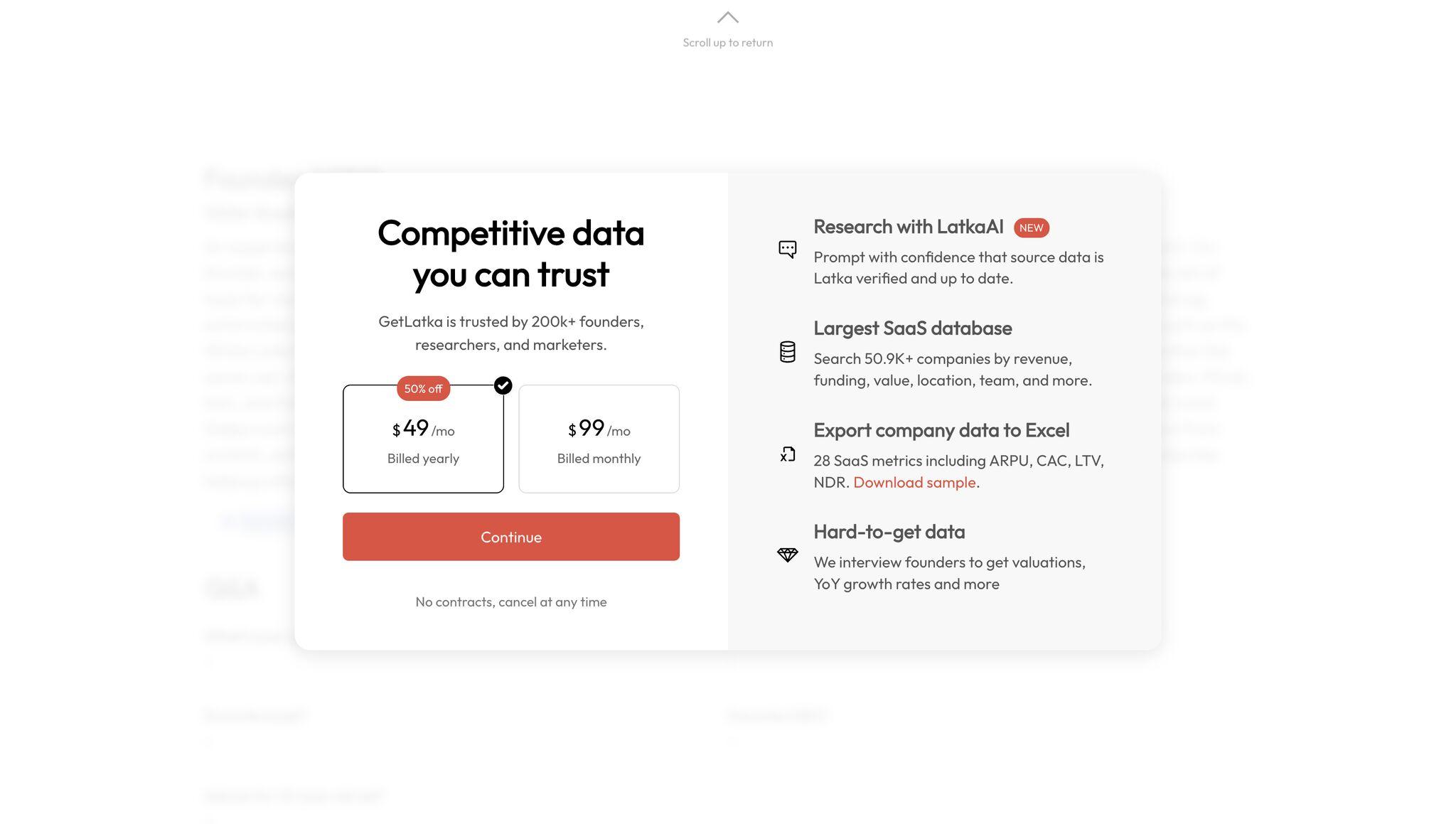
Ivan Palii noted that Latka puts the second half of webpage content behind a login popup, and encourages funnel progression with sales messaging promoting exclusive tools, founder interviews, and valuation data.
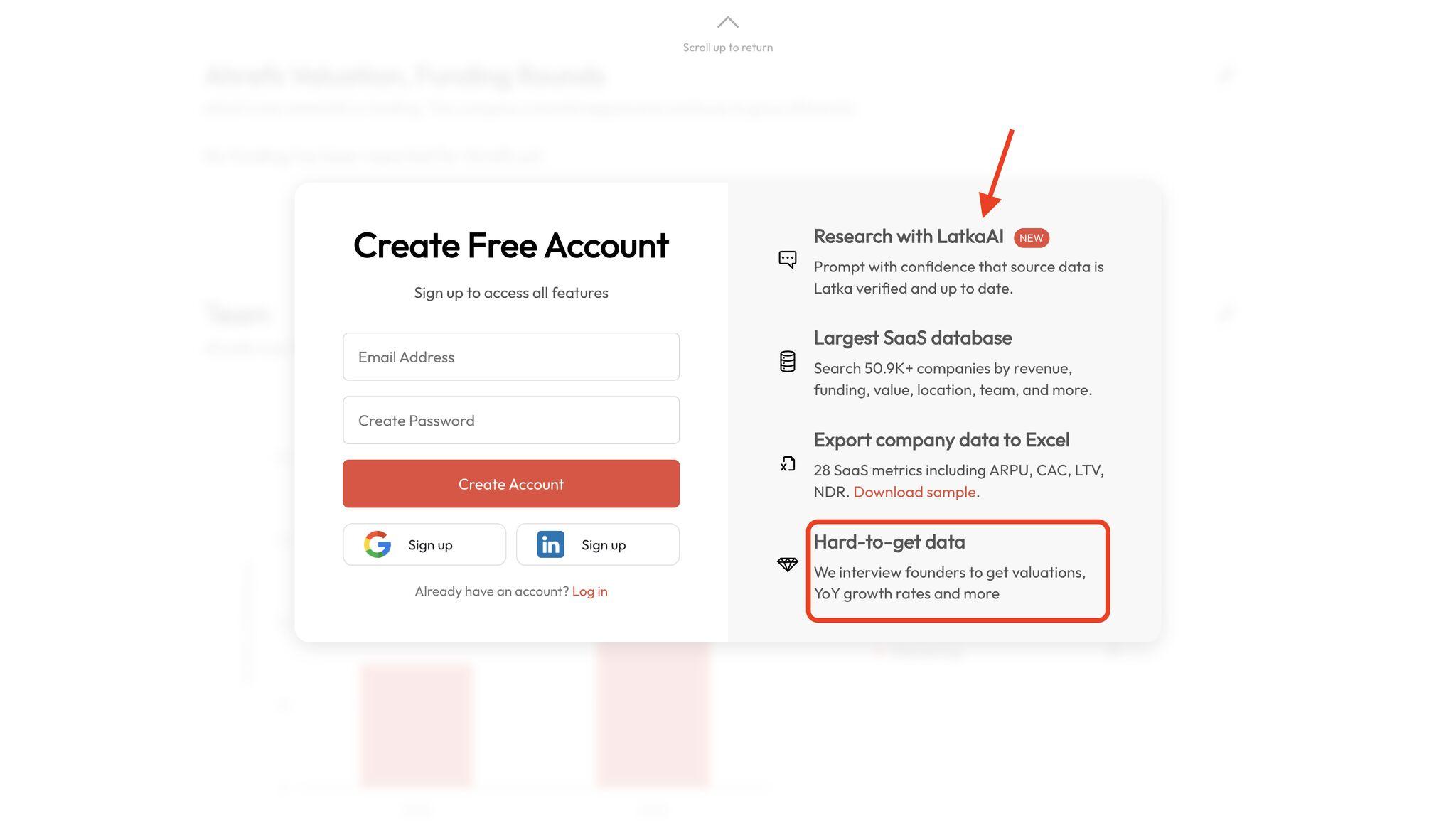
According to the sites robots.txt, Latka disallows crawlers from accessing any content that sits behind a login—which means the latter half of the page content isn’t just blocked for users, but for Google and AI too.

By blocking select bots from accessing that content, Latka is protecting his proprietary data, betting on exclusivity, and steering users toward subscriptions.
It’s also worth noting that Latka’s data is his business model—if AI scrapes it, his business could be severely compromised. This is high stakes diversification.
What he could potentially lose in passive AI exposure, he may just reclaim through owned audience engagement:
- Email activity (via gated signup). Every piece of gated content captures a potential customer’s contact information, letting Latka nurture prospects directly rather than hoping they’ll find him again through search or AI tools.
- Repeat direct visits (via logged-in access). Users who create accounts to access premium content become sticky, returning customers who bypass search engines entirely. This creates a direct relationship and reduces dependence on external traffic sources.
- Proprietary tool usage (via LatkaAI). Gated tools like LatkaAI provide value upfront, making users more likely to invest in paid services or consulting.
Partial indexation is as a traffic diversification strategy in that it funnels organic audiences through to owned channels like email lists, websites, apps, and communities.
Ultimately, that means Latka can “work” those leads—turning one-time visitors into a controllable, monetizable audience—exactly what he needs to grow his customer base and generate prospects for his business.
Latka also provides just enough data to rank and subsequently “sell” his solution in search results, but withholds detail so that AI search can’t over-summarize and steal all his clicks.
The mechanics are familiar—paywalls, email gates, login requirements, and content hidden behind popup forms. But the intent is new—brands looking to maintain control over audience relationships, rather than losing them to sources that answer user questions and kickback zero traffic.
This is a smart strategy, but it comes with risks: while blocking premium content from AI bots may work for some, the tradeoff is limited visibility in AI search.
If you have a strong brand that attracts plenty of visitors from other channels, that may not be much of an issue.
But if your brand isn’t quite as firmly established, blocking bots may cut off a new, relatively untapped, and highly converting channel.
That’s why many sites err on the side of caution when it comes to disallowing certain bots in their robots.txt.
Some of that risk might be offset through the sheer scale of GetLatka’s execution—according to Ahrefs Site Structure report in Site Explorer, Latka has applied this block to ~18K pages, which drive ~13K monthly organic visits—a figure that is actually growing.
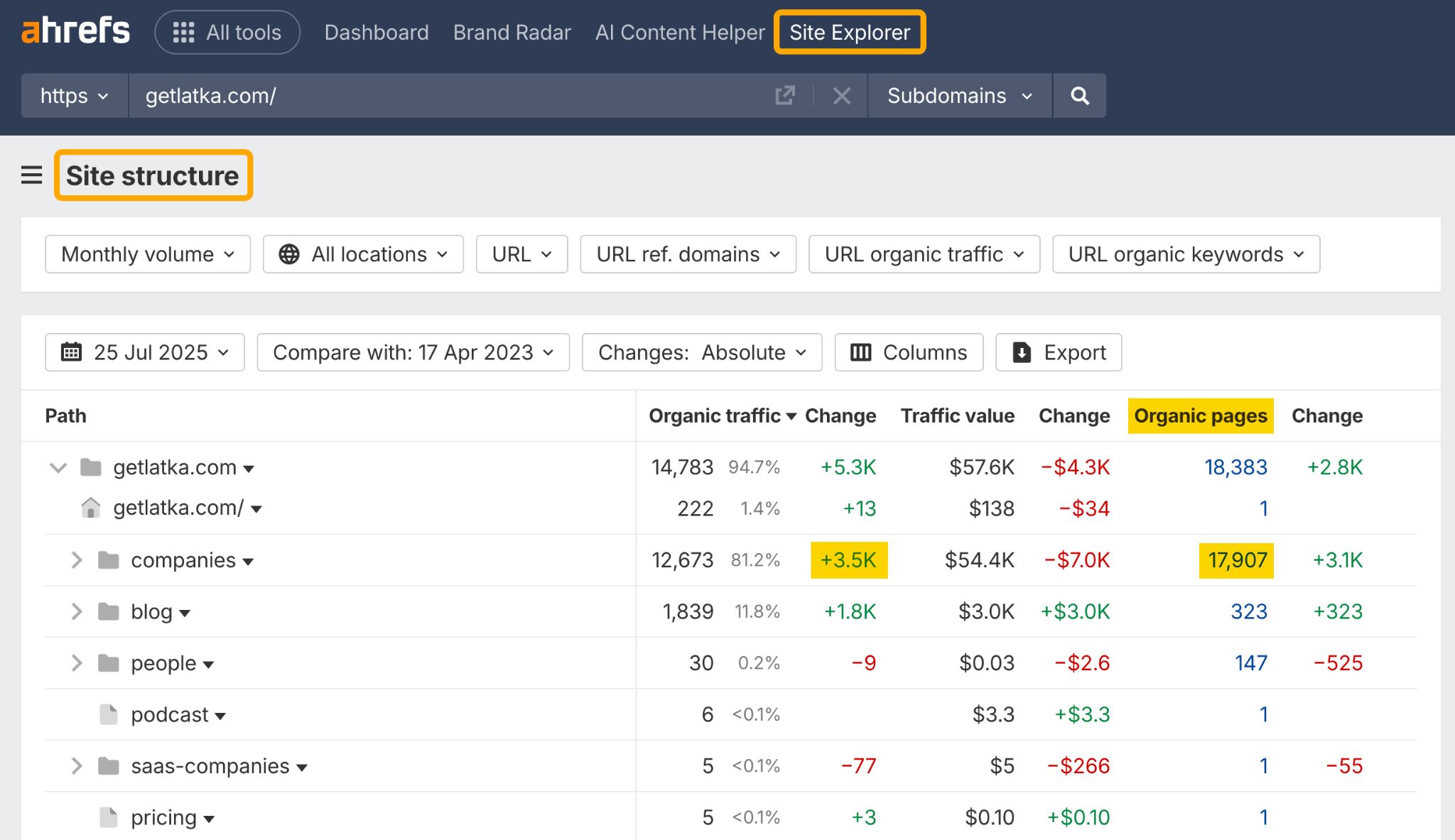
Thousands of visitors hitting this content every month. Even if only a small percentage of visitors sign up, Latka may have whipped up enough traffic to achieve meaningful conversion rates.
In other words, the top-of-the-funnel stays open, and content gates nudge users to the bottom.
This approach makes sense for GetLatka because:
- They own the data pipeline: Founder interviews and valuation insights are not available elsewhere.
- They’re monetizing it directly: Via subscriptions and their own AI tool.
- They’re still SEO-friendly: The site allows indexing by Googlebot and other major search engines, so organic traffic isn’t cut off—just AI access is restricted.
- They can potentially offset/avoid visibility loss: Due to the strength of their brand, and the scale of the execution.
In short: if you have unique content, a strong brand, and the ability to scale, you might just be able to afford to block AI bots.
HubSpot
In an almost flip-reverse of Nathan Latka’s diversification strategy, HubSpot has reportedly started gating content for users—but not for search engines and AI.
Once again spotted by Ivan Palii (who is definitely worthy of a follow, by the way!), HubSpot began applying a client-side overlay to content in June 2025, going by HTML changes shown in Ahrefs’ Page Inspect tool in Site Explorer.
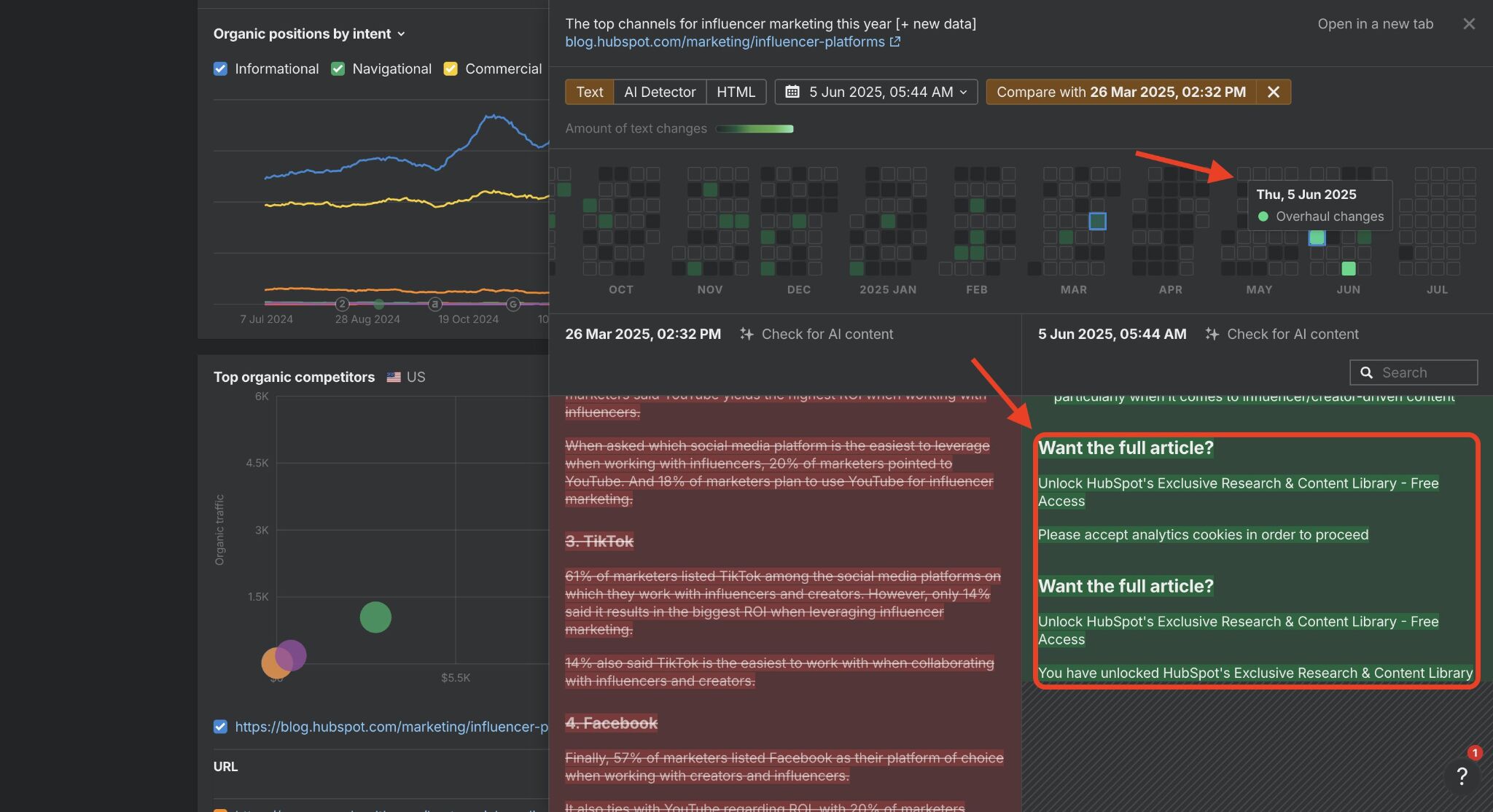
From a quick scan of the Hubspot blog, these lead capture forms appear to be popping up on recent “new data” content.
![HubSpot blog page titled "How TikTok, Canva, & Other Top Marketing Teams Outperform the Rest [New Data]" with highlighted text and an arrow pointing to it. The page shows a woman working on a laptop with a rocket graphic. At the bottom is a lead capture form asking "Want the full article?" with text about unlocking HubSpot's exclusive research and content library.](https://ahrefs.com/blog/wp-content/uploads/2025/08/word-image-190408-12.jpg)
The content is still crawlable, but users have to provide an email in order to read on.
HubSpot’s hybrid-access approach lets them attract new audiences via search and AI, while simultaneously growing their lead nurture pipeline and owned audience.
Both GetLatka and HubSpot examples mark a return to owned media strategies.
A return to owned media
Going back in time, owned media was the dominant model by necessity. Websites in the early nineties/noughties acted as sort of digital brochures that users would actively seek out.
Earned media (e.g. PR coverage) and paid media (e.g. TV, radio, print ads) were expensive and tricky to scale, by comparison.
But when search engines, social media, and aggregator sites showed up, brands moved from building their owned media to renting visibility on third-party platforms.
Now that AI can summarize brand content without attribution, and shift search behavior away from source clicks, the focus is back on building direct, defensible relationships with audiences—without the middleman.
What’s old is new again.
Thanks to AI, we’ll be joining more newsletter lists, consuming exclusive content within the confines of private communities, and seeking out un-flattened, untAInted information on channels that maybe don’t even exist yet.
While some brands are pulling back on SEO investment, others are pulling the plug.
Customers.ai
According to Founder, Larry Kim, Customers.ai has lost 72% of its SEO traffic over the last 6 months. In his opinion, Google’s AI answers are squarely to blame.
In response, he’s removing investment in content and SEO completely.
This isn’t a knee-jerk reaction. Larry used to run Wordstream, one of the biggest marketing blogs. SEO has been a huge part of his strategy over the years.
According to his LinkedIn comments, it seems he made the decision based on conversion data that revealed the true impact of AI Overviews on his business.
Our informational pages were converting around 0.1-0.2%. They were always low converting but they made it up in volume. A few hundred thousand SEO sessions are now gone. This is a loss because it is really hard to target informational top of funnel queries in other channels.
The economics are brutal but simple. Informational content that once drove hundreds of thousands of sessions is now generating a fraction of the traffic, and none of the conversions.
For Larry, it’s not simply a case of moving down-funnel to target transactional keywords.
In his opinion, informational queries represented the last “clean” SERP environment where organic results could compete against paid placements. AI Overviews essentially eliminated that advantage.
Transactional keywords for SEO were previously extensively populated by the paid search results. So sure, you can invest there but even if you win the top spot, you’re pushed below a half dozen ads. Informational queries were this super special last greenfield SERP where you didn’t have that dynamic of being under a ton of ads. It hurts given how much I invested in that but it’s also the reality of the situation.
Instead of relying on organic search, he is shifting toward channels that offer more control and clearer attribution.
That includes paid campaigns, outbound emails, and industry-facing assets. His ultimate goal? Conversions.
With Customers.ai, he’s tracking anonymous visitors already landing on his site, and converting that passive traffic into usable contacts.
Today he’s less about filling the funnel, and more about putting it to work.
“We’re focused on converting the traffic we do get (from all channels, including SEO) into accurate, usable content with Customers.ai’s website visitor ID… We have stopped creating or repurposing content that is designed to appear in search results. Content is still produced for other channels: Ads, Emails, Industry Reports, etc. But the idea of using generative AI to come up with page content then publishing it to the website then getting people to link to it -- that is dead, yes.”
You can also track anonymous visitors to your site by traffic source, using Ahrefs Web Analytics.
It’s an easy-to-use, privacy friendly, and completely free GA4 alternative.
Just install the script directly into the <head> section of your website to get going.
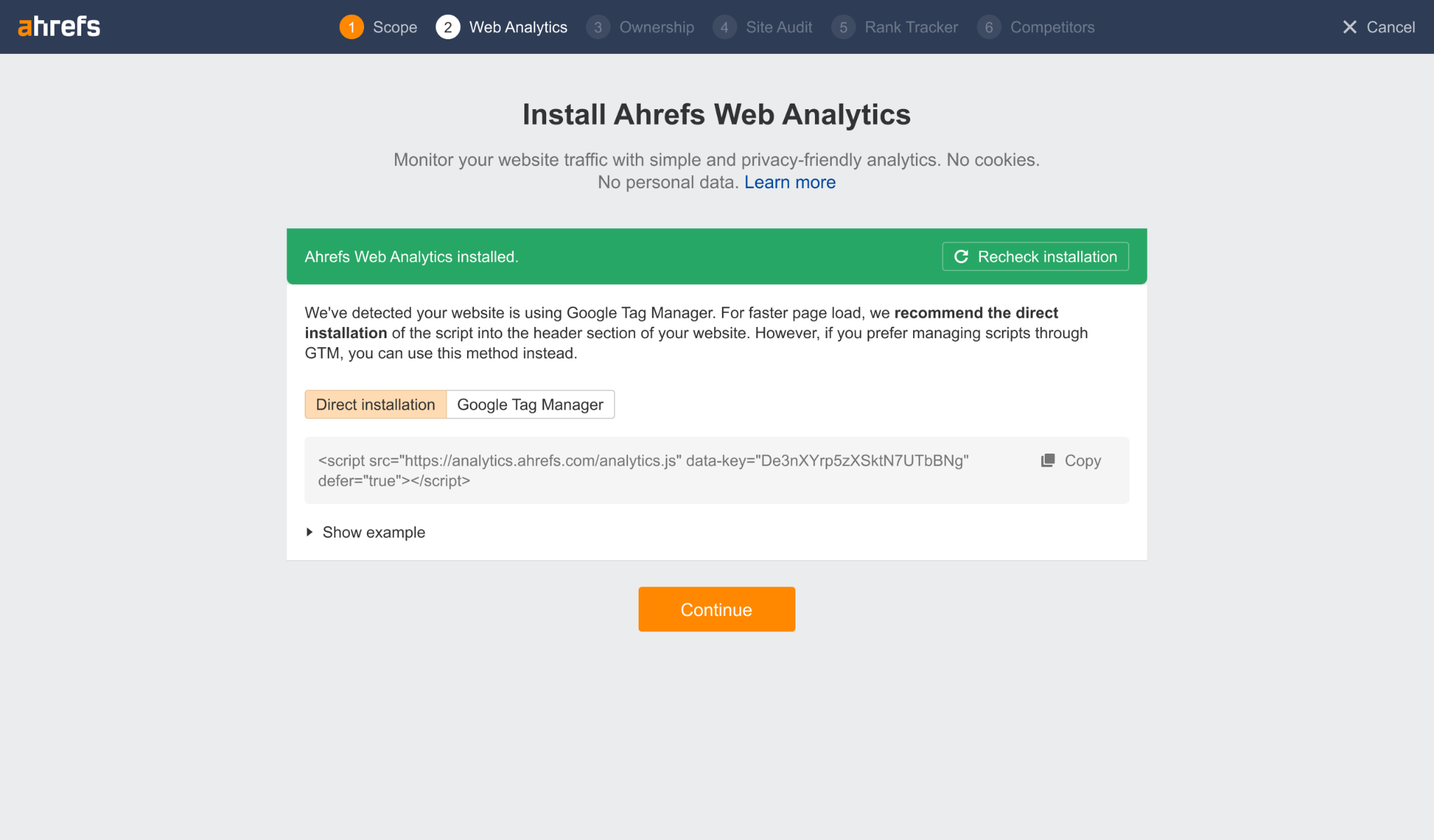
From there, you’ll see your site visits from all channels ¹, user engagement metrics ², and even tracked events ³.
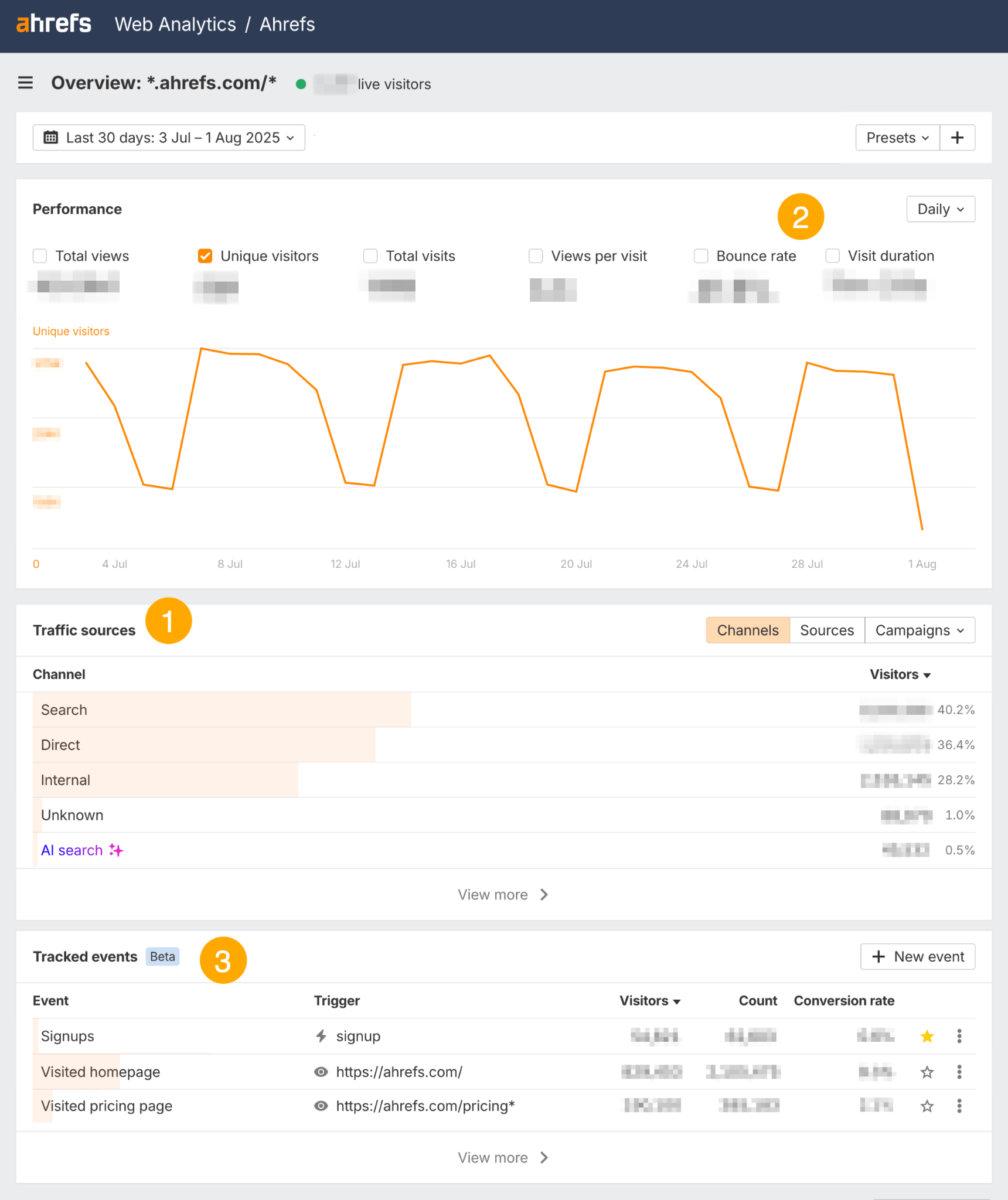
Then track events, to observe different funnel flows and optimize your conversion paths.
Some marketers are responding to AI-driven changes by producing more content, not less.
Single Grain
In a recent webinar, Eric Siu of Single Grain used Warren Buffett’s famous “cigar butt” analogy to describe post-AI-Overview search—there are still a few puffs left in the channel, but marketers need to maximize them.
His go-to solution is bottom-of-the-funnel programmatic content.
We’re focusing a lot more on transactional content. Maybe, a couple years ago, between 70–80% of the content that you published on your website was informational content. Maybe 20–30% of your content was transactional content. Today, I actually think that’s flipped… And so what we’re doing now at Single Grain, even for our clients, is we are focusing more on programmatic content. We’re creating templated [transactional] pages.
Using Manus and Clickflow, his team builds templated, conversion-focused pages at scale, complete with AI-assisted copy, custom CTAs, case studies, and podcast embeds.
Siu is confident that AI-led programmatic content won’t be penalized, provided it meets user intent, adds real value, and involves a human-in-the-loop.
When clients come to us, they say ‘Oh, we’re not comfortable with AI content’ from a security or brand safety standpoint… Google has said in the past they’re not OK with AI content, then they changed their stance. They ended up saying ‘AI content is OK as long as it helps human beings’… The way we look at it now, is you might be using different tools out there [to create AI content]… and you have a human-in-the-loop. We see that as the future of marketing.
Our own research backs this up: after analyzing 600,000 webpages, we found little evidence to suggest that AI-generated content harms Google rankings.
But this isn’t just about ranking in Google. For Siu, programmatic content helps him wring the remaining value out of search, while also gaining new ground in AI.
He believes publishing in volume across the web increases his odds of surfacing in what are effectively infinite, personalized AI SERPs.
The more content you’re publishing… the more shots on goal you have to appear in LLM results. And just bear in mind, whenever there’s an AI result, there’s not just one SERP, or a few SERPs, now you have hundreds or thousands of different permutations, and you’re just trying to increase your chance of showing up ultimately.
Based on this logic, programmatic content diversifies exposure by giving not just Google, but also AI systems, a greater volume of brand material to draw from.
Nerdwallet
According to Steve Toth, Nerdwallet’s programmatic content is helping them to eke as much traffic out of organic and AI search as possible.
Nerdwallet programmatically create verticalized and localized tools—like mortgage calculators for different regions—to scale their site visits.
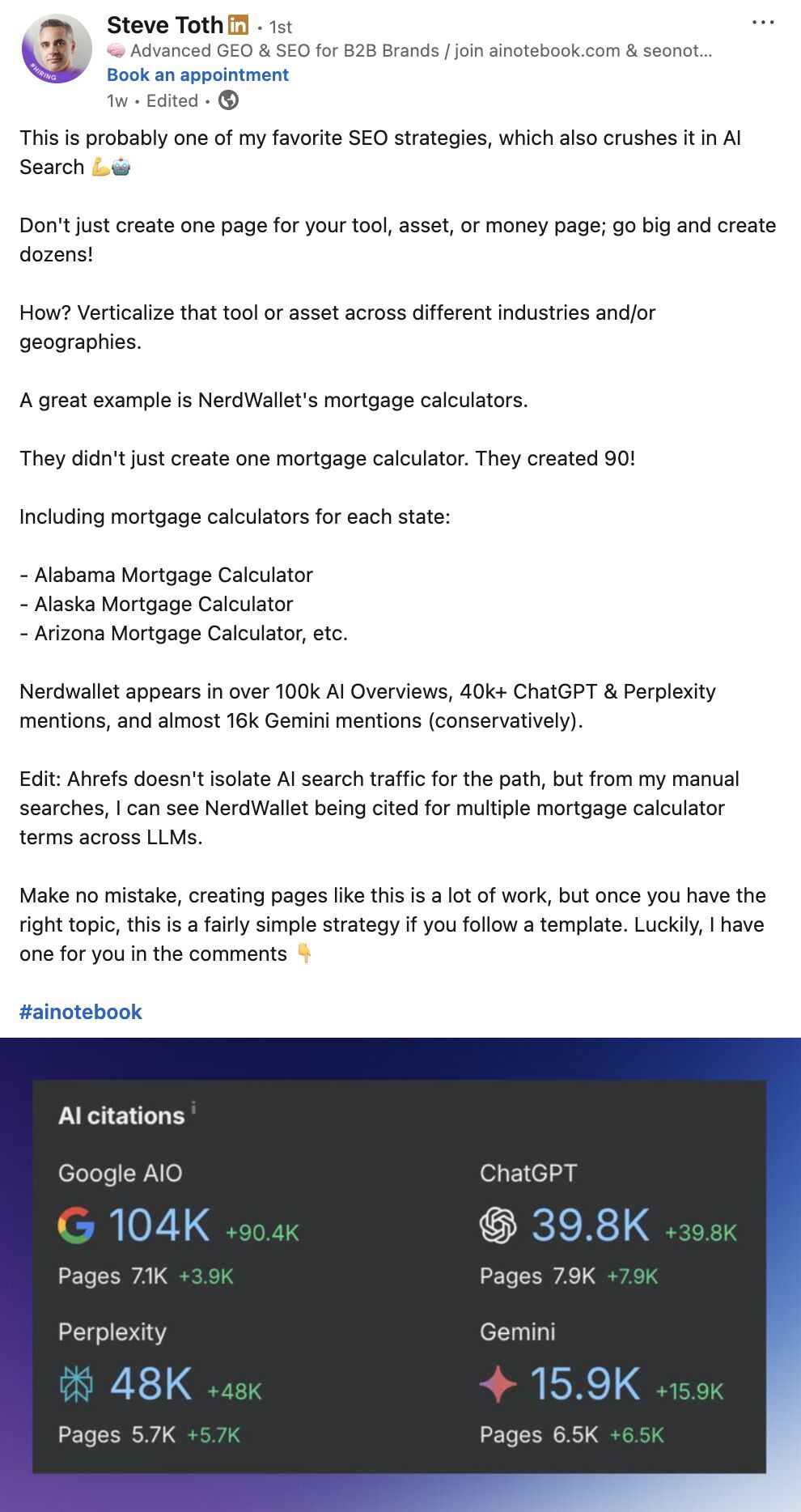
And, as it stands, they are seeing positive growth across all AI surfaces.
I dug a bit further into Nerdwallet’s site, using Ahrefs Site Structure and Page Inspect tool, and found that Nerdwallet’s mortgage calculators aren’t actually new pages.
But I did notice 539 net new programmatic pages under Nerdwallet’s “Insurance” folder—mostly designed around variations of popular, high-value transactional keywords like “best car insurance companies” and “cheapest car insurance”.
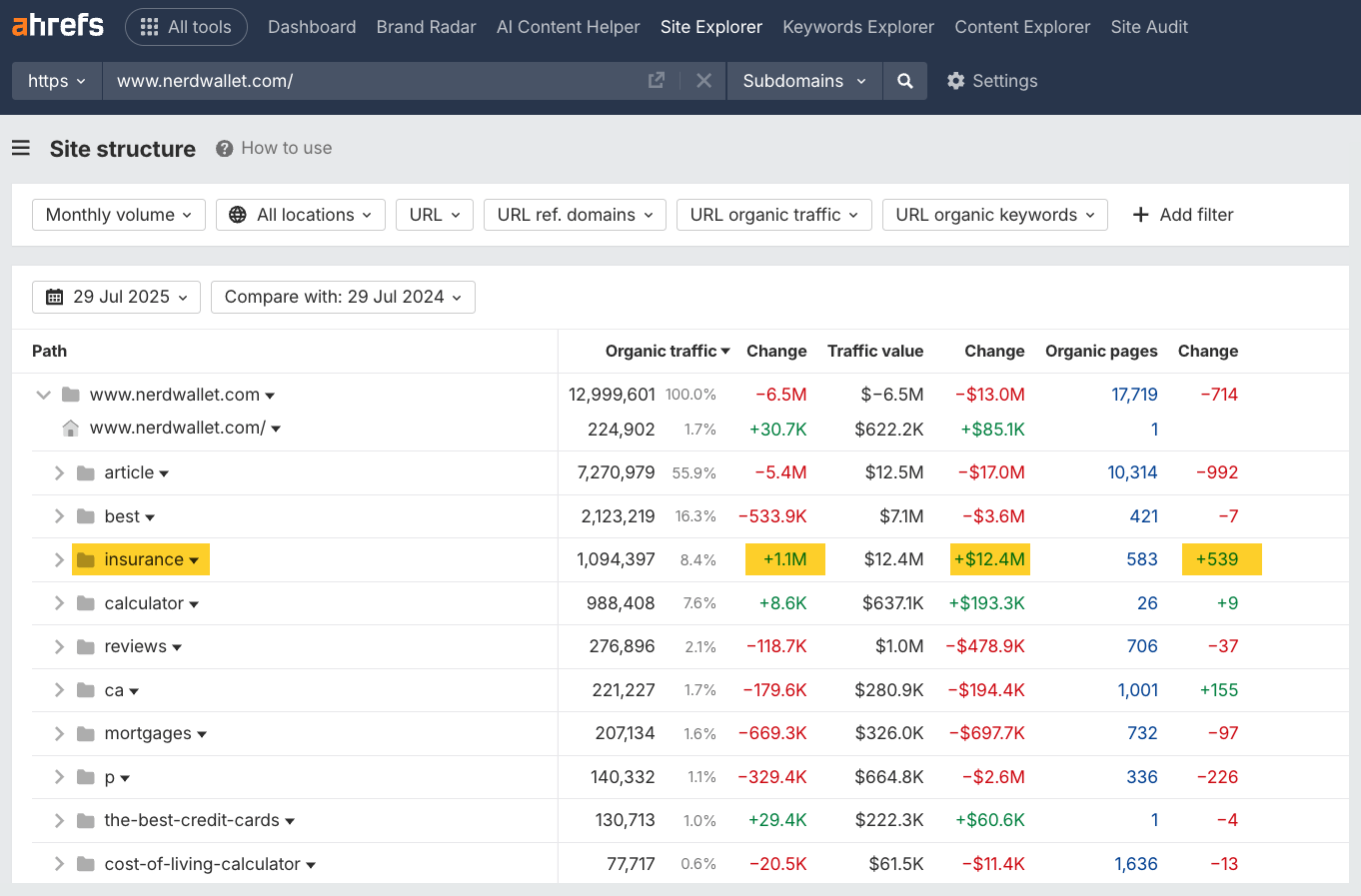
The addition of these pages has brought in 1.1M additional organic traffic, and $12.4M in organic traffic value over the last year.
This helps make up for traffic drops across other parts of the site—and, in a landscape where the default expectation is traffic decline, this kind of growth is not to be sniffed at.
If you’ve been reading up on AI SEO lately, you’ll probably have seen a lot of discussion around the efficacy of creating “best” lists and recommendation content to engineer AI visibility.
It seems this content is working for Nerdwallet right now.
Going by our Page Inspect tool, the majority of their programmatically created “best” and “cheap” insurance pages were published in late April, 2025.
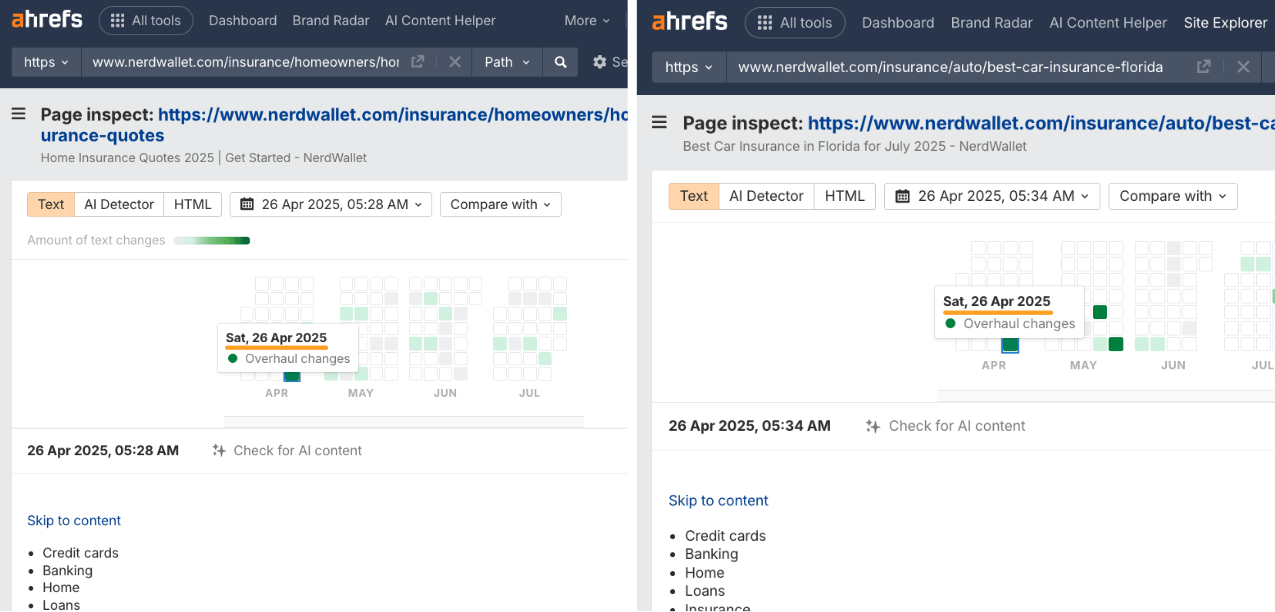
Since then their “insurance” based AI Overview citations have increased by a healthy 16%.
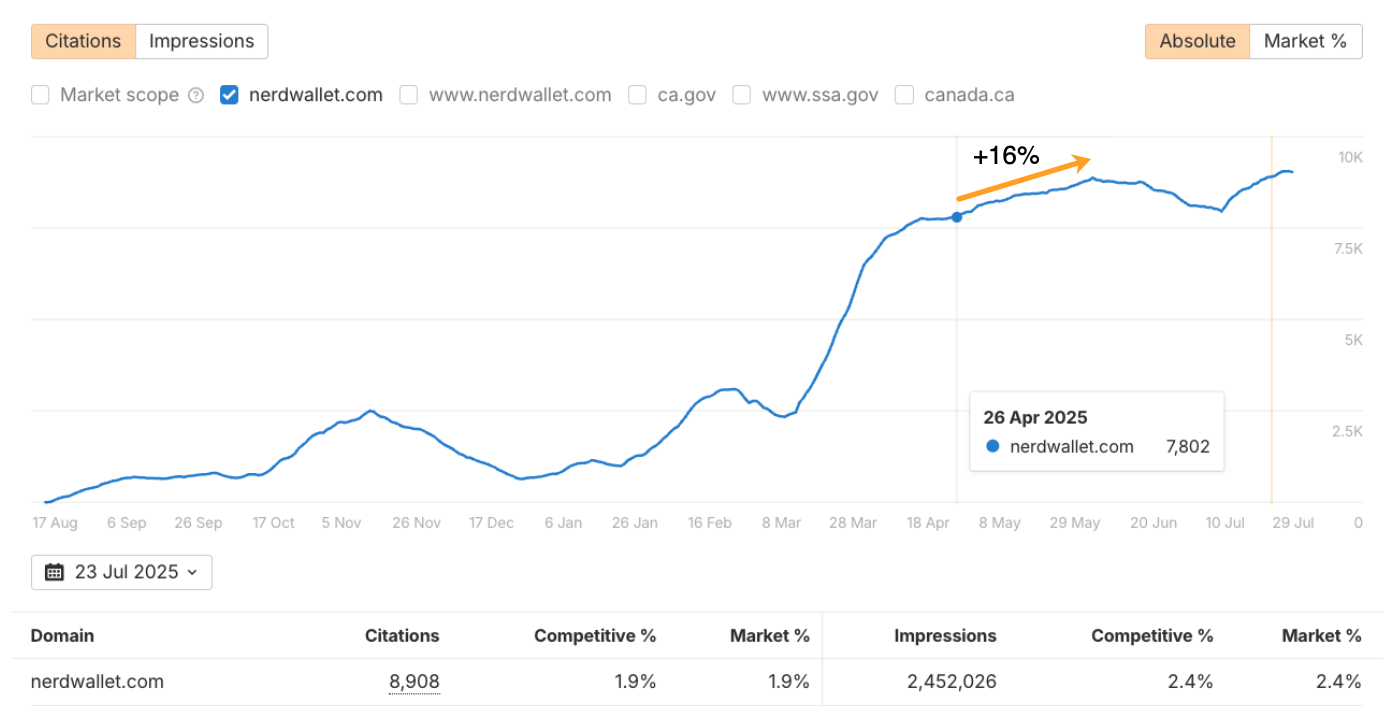
Like Single Grain, it seems Nerdwallet are scaling content in an attempt to build visibility across both search and AI surfaces.
Relying solely on Google is risky—we now know that all too well. Algorithm updates and SERP changes can tank traffic.
Search Everywhere Optimization spreads the risk across multiple platforms and helps brands build a more resilient acquisition funnel.
“Search everywhere optimization” is the idea of optimizing your content and presence, not just for traditional search engines like Google, but for every platform that has a search bar—including YouTube, TikTok, Reddit, Amazon, Pinterest, app stores, internal site search, and even AI assistants like ChatGPT.
It’s essentially about branching out to new channels. You don’t have to be everywhere, just everywhere your customers are.
Tally
Tally has got search everywhere optimization right. They reached $3M ARR in a matter of months, with AI as their lead acquisition channel, thanks to being present in “AI’s source material”.
That is to say across forums, Reddit, blogs, and user-generated content (UGC).

You can’t put all your reach in one platform’s hands anymore.
Diversification looks like showing up for your customers, wherever they turn up online.
Tally succeeded because they did precisely that.
By focusing on genuine customer engagement, they built their brand and inadvertently positioned themselves perfectly to show up in AI-driven conversations.
Wrapping up
These eight companies all tackle the same core challenge: building direct audience relationships instead of depending on third-party visibility that can vanish overnight.
The common thread is audience ownership—brands are adapting their SEO strategies to own their audiences through lead lists, social followings, and branded communities rather than renting them from platforms like Google.
That said, even with traffic drops of 20-40%, SEO is still one of the most reliable marketing channels out there. It’s still predictable, still compounds over time, and still delivers targeted traffic at scale.
As Ryan Law points out, SEO has evolved from a “magic money tap” to an extremely good marketing channel with some new limitations.
The companies above aren’t abandoning SEO because it stopped working—they’re diversifying because they recognize that no single channel, however effective, should be their entire growth strategy.

